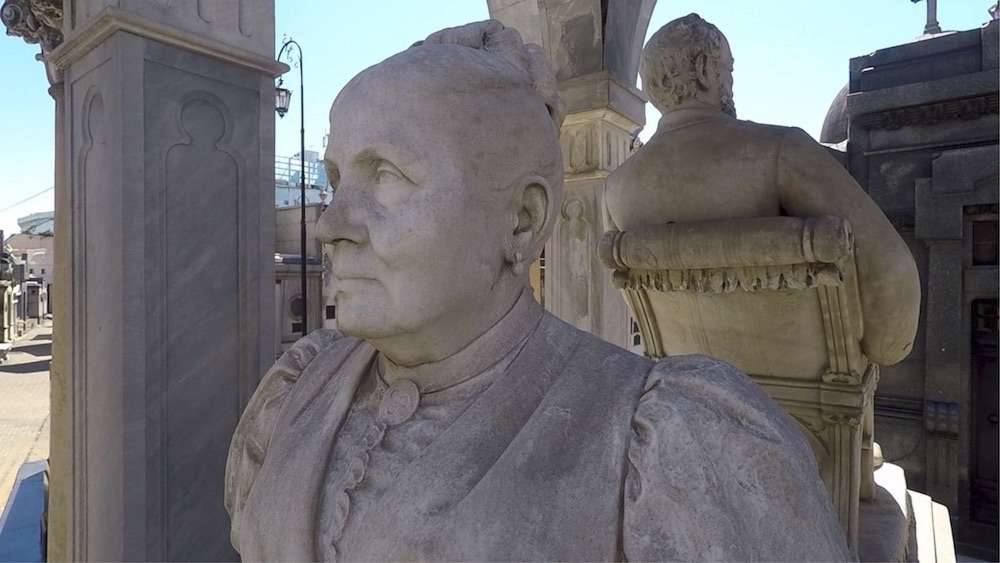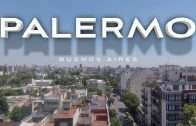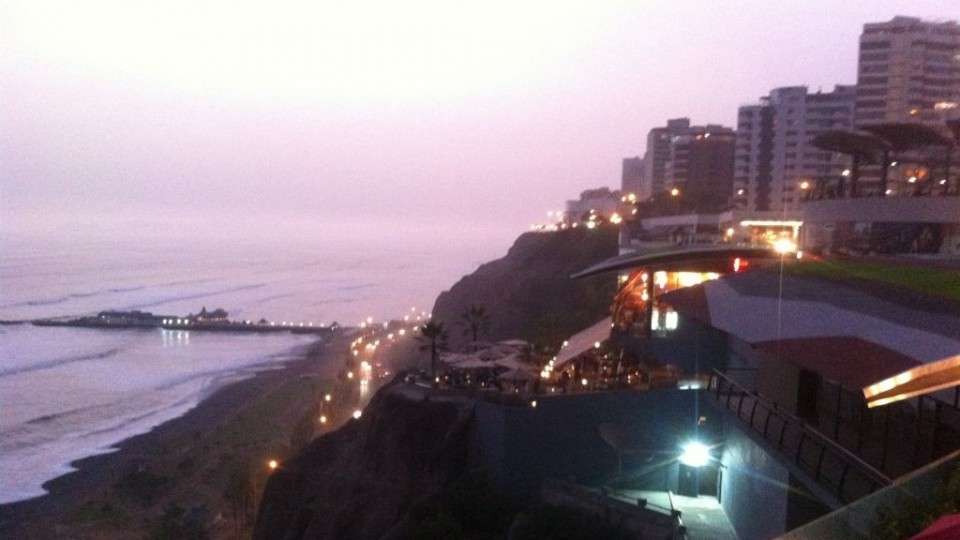5 Tombs to Visit in La Recoleta Cemetery
These are 5 tombs to visit in Buenos Aires La Recoleta Cemetery that should not be missed because of their unique stories.
The first public cemetery in the city of Buenos Aires in 1822, La Recoleta Cemetery is the most historical and artistic monument of Argentina.
The site has 4691 vaults, of which 94 have been declared National Historical Monuments by the Argentine government and are protected by the state. The first two burials at La Recoleta were a black freed boy, Juan Benito, and a young lady called Maria Dolores Maciel.
Located in the Recoleta neighbourhood of Buenos Aires, Argentina. It contains the graves of notable people, including Eva Perón, presidents of Argentina, Nobel Prize winners, the founder of the Argentine Navy, and a granddaughter of Napoleon.
Entrance to the cemetery is free, and is open 7 a.m. to 6 p.m. every day.

Rufina Cambaceres
(1883 – 1902)
A young woman who was buried alive. This Argentine woman had perhaps gone into a coma in 1902 and was pronounced dead at age 19. A few days after her burial, workers heard screams from her tomb. When it was opened, there were scratches on her face and on the coffin from her attempts to escape.
Her mother then built a grand Art Nouveau tomb with sculpted orchids and a soulful statue of the young woman. Though the story of her tragic death has never been verified, it has captured the hearts of thousands of visitors to Rufina’s grave.

Liliana Crociati de Szaszak
(1944 – 1970)
The 26-year-old Liliana Crociati de Szaszak was on her honeymoon in Innsbruck, Austria on 26 February 1970, when her hotel was struck by an avalanche, killing her. Local legend says her dog Sabú also died on the same day.
Her tomb was designed by her mother in the Neo-Gothic style, in sharp contrast to the other tombs in the cemetery. Adjacent to the tomb stands a dais adorned with a plaque containing an Italian-language poem by her father, and topped by a life-size green bronze statue of Crociati de Szaszak in her wedding dress, by sculptor Wíeredovol Viladrich. Following the death of Crociati’s dog Sabú, a bronze statue of the dog, also by Viladrich, was added, with Crociati’s hand resting on the dog’s head.

David Alleno
(1854 – 1910)
Italian gravedigger David Alleno worked for thirty years in La Recoleta cemetery. David had a certain sector which he maintained & apparently became obsessed over where his final resting place would be, saving his wages throughout his life for his very own plot in the burial ground. He commissioned an Italian architect to sculpt a statue of himself, complete with keys, broom & watering can. When the sculpture arrived from Italy and was placed in the tomb, he went home and committed suicide.
Many reputable sources say he died years after the tomb was constructed, yet rumours that he haunts the cemetery at night still persist. As the legend goes, one can still hear the noise of his keys as he walks the narrow streets before dawn.
Whether the motive is true or not, David Alleno is now locked in with the elite residents of La Recoleta Cemetery.


Salvador Del Carril and his Wife
A gigantic mausoleum commemorates the life of Salvador María del Carril and the story of his wife Tiburcia Domínguez, an important figure in the early days of Argentine history who participated in national politics. Del Carril lived in Uruguay during the Rosas period where he met his wife, Tiburcia, 25 years younger than him.
Del Carril passed away in 1883, and Dona Tiburcia Domínguez of Del Carril had this elaborate construction built to honor his memory. The vault is a monumental construction in which the most prominent part is a canopy, in the form of a needle crowned with the figure of Cronos, God of Time, by the sculptor Camilo Romairone.
In spite of Del Carril’s decades of participation in Argentine politics, he is also well-known for having major marital problems. Tiburcia apparently liked to spend Del Carril’s fortune to a point where he published a letter in several major newspapers claiming that he would no longer be responsible for his wife’s debts. That obviously didn’t go over well with Tiburcia.
Rumour has it that before she passed away in 1898—fifteen years after her husband—Tiburcia requested that her bust look away from Del Carril for eternity. To this day, the unhappy couple have their backs to each other.


Gen Tomás Guido
(1788 – 1866)
A General in the Argentine War of Independence, Guido joined the revolution of May 1810, helping to negotiate independence from Spain. His son, poet and politician Carlos Guido y Spano, built his father’s stony vault in tribute, with his own hands.
Sources:
AfterLife » Urban legends » La Recoleta Cemetery
10 Tombs to Visit in Buenos Aires’ Recoleta Cemetery











